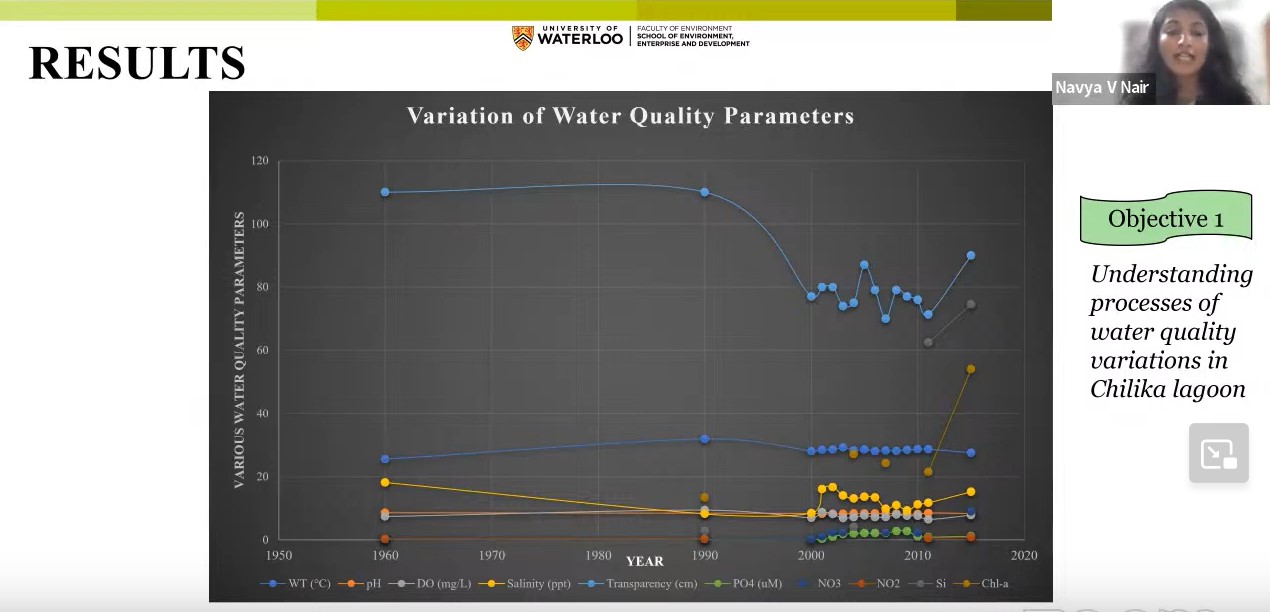 Small-scale fisheries face multidimensional vulnerabilities from natural (e.g., disasters, ecosystem shifts) and human factors (e.g., policy, aquaculture, infrastructures, pollution). Despite extensive research on these, the connection between vulnerability and water quality remains unexplored. Fishing communities relate fish to aquatic health, highlighting the importance of water quality. In this webinar Navya Vikraman Nair, PhD candidate at the University of Waterloo, Canada, delved into how water quality impacts vulnerabilities in small-scale fisheries.
Small-scale fisheries face multidimensional vulnerabilities from natural (e.g., disasters, ecosystem shifts) and human factors (e.g., policy, aquaculture, infrastructures, pollution). Despite extensive research on these, the connection between vulnerability and water quality remains unexplored. Fishing communities relate fish to aquatic health, highlighting the importance of water quality. In this webinar Navya Vikraman Nair, PhD candidate at the University of Waterloo, Canada, delved into how water quality impacts vulnerabilities in small-scale fisheries.
Navya started by introducing key characteristics of small-scale fisheries and the major factors which influence water quality. Her study site is Chilika Lagoon. It is the largest brackish water lagoon in Asia and second largest coastal lagoon in the world, spread over the Puri, Khordha and Ganjam districts of Odisha state on the east coast of India, at the mouth of the Daya River, flowing into the Bay of Bengal. It covers an area of over 1,100 square kilometres. some 800,000 people are estimated to live around the water body or its immediate vicinity. About 200,000 people are estimated to be active in the fisheries and their value chains. A small population of 112-140 Irrawaddy dolphins, Orcaella brevirostris, is resident.

More frequent measurements of water quality parameters in the last two decades reflect at least partially human influences intensified since the 1990s in terms of infrastructure constructing affecting freshwater flows, biodiversity loss and pollution, among others. What people in fishing communities have observed is e.g. algal blooms from eutrophication, that provoked lowered light penetration and hypoxia (loss of oxygen).
The results of the field investigation show, among others, that the degradation of the resource fired up conflicts over access and forced quite a number of fishers to give up their work as a result of the combined negative impacts. That translated into increase of poverty, food insecurity and outmigration. Yet, the political marginalisation of the riparian populations made it difficult to have a voice in policy and management processes that might at least mitigate the downward trends. A national plan for implementing the Voluntary Guidelines for Securing Sustainable Small-Scale Fisheries could be helpful in addressing these issues, but it has not yet been forthcoming.
Click here to follow the entire lecture and Q&A session.








